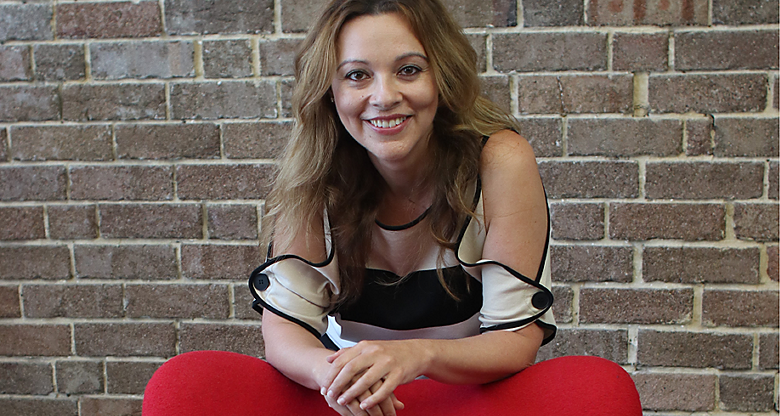“Innovation has become a bit of a buzzword, and that’s actually doing it a massive disservice because for me, to innovate is to be human. It’s the only thing we’ve ever known, from when we crawled out of the swamps and when we started using sticks, it’s in our DNA, it is viscerally part of the human experience to try and do things better.”
Dr Catherine Ball was the 2015 National Telstra Business Woman of the Year, in the Corporate and Private sector award. Her breakthrough work focussed on sending Remotely Piloted Aircraft Systems (RPAS), or ‘drones’ to remote areas of Australian coastline to observe offshore islands with turtle rookeries. We recently spoke to Catherine about applying non-traditional uses of technology as a means of innovative thinking, the impacts technology will have on the world around us and the ways businesses can be more innovative.
Innovation doesn’t need to be based solely in technology or processes. At its most basic, it is looking to solve a problem and improve the efficacy of reaching an objective, but many people find the word intimidating. “If people feel they can’t relate to the word ‘innovation’, forget the fact that it’s a buzzword, and go back to your gut and say ‘actually, I want to make things better, I’m an innovator.’”
Applying non-traditional uses of technology is one of the examples Catherine uses to illustrate innovative approaches businesses can take. Australia is leading the world in using drone technology for non-military applications, with drones being used for everything from cinematography to monitoring environmental change. Looking across different industries and sectors and exploring the ways to apply technology or processes is vital to exploring opportunities for businesses.
While there is no specific metric that can be put behind innovation, businesses can look at the holistic culture of their business, and ask two questions:
1. Are we blocking innovation?
2. Are there things we can do to allow bigger conversations or nurture wild and creative ideas?
“Sometimes we need to have an opportunity to be vulnerable in a place we feel safe, to maybe throw out some crazy thoughts, or collaborations, and that really is the culture of innovation.”
Catherine challenges us to think differently and through that come up with new solutions “Did you ever have a dream as a kid where you were flying? How can we do that if we’ve never ever flown, how are we physically able to do that?” Physiologically, of course, we can’t. But with drones, it’s possible to experience a bird’s eye view and to Catherine, this makes drone footage special, it is like flying. “It takes me to places that are so hyperreal.
It’s not because we can see a landscape or different perspective, it is the emotional connection that people experience as a result; it taps into the hopes and aspirations of us, and reminds us, maybe, of a time when we felt completely free. The imagery produced, even from smaller drones, can significantly alter the way we see the world around us.”
The innovation can be in the application, rather than in the technology itself. And it is approaches like these that are changing the way people do business. “Tangible technologies that you can use to make your life easier and better and grow your business.” It’s now becoming possible for businesses to hold virtual reality meetings, where all participants feel as though they are in the boardroom. We are no longer geographically confined, we don’t have to commute, you can be wherever you want to be and still hold the meeting that you need to and you can still have those face to face connections.”
All industries have and will continue to be disrupted through technology. There is a large focus on automating, and roboticising many (traditionally) human occupations and interactions. “We already have a robot lawyer, we’ve got robot accountants, and we’ve got robotic insurance agents.” No industry is immune. “There are machine learning algorithms that are learning to interact with people. People that have developed robot faces that can actually work out whether or not you like what it’s saying to you.”
Innovation doesn’t stop with the technology. Catherine explains that one of the easiest ways to innovate is to increase the diversity of thinking in your company, and one of the easiest ways to increase diversity of thinking in your company is to collaborate with people who don’t have the same background as you.
Innovation is multidisciplinary, and non-traditional uses of processes and technologies are being applied to new sectors, and Catherine believes that looking across sectors and disciplines is vital to having a diverse business community. “STEAMM [science, technology, engineering, arts, maths and medicine] has become the new STEM. Steve Jobs once said, ‘It’s where technology crosses over with the humanities that we find the things that make our hearts sing,’ and I couldn’t agree more.”
The lack of women in the STEM fields is something Catherine wants addressed, especially across the new drone economy, and she believes it is up to us, as a collective, to pioneer technologies and be the leaders through the ethical questions in these as yet unchartered waters.
“We have the power, especially as women, to take control of some of these new technologies and apply some fresh thinking. Especially around the ethical uses for these technologies and to turn them into real, tangible business opportunities for our communities and across Australia.”
Sign up to the Women in Focus newsletter for updates on our community and events, and more content like this.






